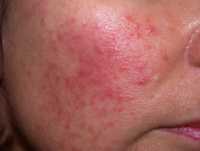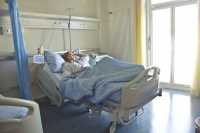MedicalResearch.com Interview with:
Prof Ranjit Manchanda MD, MRCOG, PhD
Professor of Gynaecological Oncology & Consultant Gynaecological Oncologist
NHS Innovation Accelerator (NIA) Fellow
Integrated Academic Training Programme Director
London Specialty School of Obstetrics & Gynaecology, Health Education England
Specialty Research Lead for Gynaecological Cancer, NIHR, North Thames Clinical Research Network
Cancer Research UK, Barts Centre | Queen Mary University of London
Centre for Cancer Prevention, Wolfson Institute of Preventive Medicine | Charterhouse Square | London
Department of Gynaecological Oncology | Barts Health NHS Trust, Royal London Hospital
MedicalResearch.com: What is the background for this study?
Response: Around 10–20% of ovarian cancers and 6% breast cancers overall are caused by inheritable BRCA1/BRCA2 mutations. Women carrying BRCA1/BRCA2 mutations have a 17–44% risk of ovarian cancer and 69–72% risk of breast cancer until age 80 years. Most of these cancers can be prevented in unaffected BRCA1/BRCA2 women carriers. Women can opt for a range of options including screening, preventive, and reproductive choices to minimise their risk.
The current approach uses established clinical-criteria/family-history (FH) based a priori BRCA probability thresholds to identify high-risk individuals eligible for BRCA testing. However, this requires individuals and health practitioners to recognise and act on a significant FH. BRCA carriers, who are unaware of their FH, unappreciative of its risk/significance, not proactive in seeking advice, or lack a strong FH (small families/paternal inheritance/chance) get excluded. Over 50% BRCA carriers do not fulfil clinical criteria and are missed.
Despite >25 years of BRCA testing and effective mechanisms for prevention, current guidelines and access to testing pathways remain complex and associated with a massive under-utilisation of genetic testing. Only 20% of eligible women have accessed/undergone genetic testing and our earlier analysis showed that 97% of BRCA carriers in the population remain unidentified. Current detection rates are inadequate to identify all BRCA carriers and even doubling detection rates will not work.
Why should we wait for decades for people to develop cancer before identifying BRCA carriers and unaffected at-risk family members to offer prevention?. This highlights substantial missed opportunities for early detection and prevention. A new population testing approach can change this. Jewish population studies show this is feasible, acceptable, has high satisfaction (91–95%), significantly reduces anxiety, doesn’t harm psychological well-being or quality of life, and is extremely cost-effective. However, this has not been evaluated in the general population and in particular across different countries or health systems. The potential applicability and scope for this approach transcends continents and countries. Additionally, for interventions to be sustainable, they need to be cost-effective and affordable.
We have undertaken a cost-effectiveness analysis of population based BRCA testing compared with current standard clinical testing of women designated as high risk, across high income countries (UK/USA/Netherlands), upper-middle income countries (China/Brazil), and low-middle income country (India).
(more…)






 MedicalResearch.com: What is the background for this study?
Response: The PEOPLE study is an open-label extension of the Phase III PEPITES trial designed to evaluate the long-term safety, tolerability and efficacy of Viaskin Peanut 250 μg (DBV712). Participants who completed the 12-month study period of PEPITES were eligible to enroll in PEOPLE, which evaluates the eliciting dose (ED) after three years (Month 36) of active treatment using a double-blind, placebo-controlled food challenge (DBPCFC).
MedicalResearch.com: What is the background for this study?
Response: The PEOPLE study is an open-label extension of the Phase III PEPITES trial designed to evaluate the long-term safety, tolerability and efficacy of Viaskin Peanut 250 μg (DBV712). Participants who completed the 12-month study period of PEPITES were eligible to enroll in PEOPLE, which evaluates the eliciting dose (ED) after three years (Month 36) of active treatment using a double-blind, placebo-controlled food challenge (DBPCFC). 




















![MedicalResearch.com Interview with: Dr Herman Anne Service de Dermatologie Cliniques Universitaires Saint-Luc Avenue Hippocrate, 10 1200 Bruxelle MedicalResearch.com: What is the background for this study? Response: In the context of the COVID-19 pandemic, several cases of acro-located lesions (on foot or hands) suggestive of chilblains have been reported and were possibly related to COVID-19. We wanted to determine if chilblains, observed in many patients recently referred to our department, are indicative of COVID-19. MedicalResearch.com: Would you briefly explain what is meant by chilblains? Response: Chilblains are frequent cold induced inflammatory lesions. Chilblains are typically seen in winter and occur after repeated exposure to cold temperatures. Clinical presentation includes erythema and swelling on toes and/or digits followed by red-purple macules or patches. However, given the large number of patients affected, and the exceptionally high outdoor temperatures for the spring season over the past month and at the time of case-observation, cold-exposure seemed unlikely. These lesions were, therefore, suspected to be associated with COVID-19. However, to date, no study has proven a pathological link between these lesions and COVID-19. MedicalResearch.com: What are the main findings? Response: In our series of 31 patients who recently developed chilblains, negative nasopharyngeal swabs and the absence of anti-SARS-CoV-2 blood immunoglobulin (Ig)M and IgG antibodies in all patients included in your study suggested that these patients had not been infected with COVID-19. These lesions appeared not to be directly related to COVID-19. MedicalResearch.com: What should readers take away from your report? Response: One hypothesis points to an indirect consequence of the COVID-19 pandemic due to imposed community containment and lockdown measures. Indeed, all patients in this study had either been working from home or were home-schooled since the beginning of containment measures in Belgium (March 11, 2020) or were temporarily unemployed. As a result of containment measures, the majority (64.5%) of patients reported a decrease in their physical activity and significantly more time spent in sedentary positions in front of screens. Most of the patients declared that they remained barefoot or in socks most of the day. All these lifestyle changes can be considered as risk factors for developing chilblains. Therefore, it seems plausible that containment, through its collateral effects, may induce chilblains. Interestingly also, the mean BMI of the patients included was relatively low, suggesting that thin people may be more at risk of developing chilblains. MedicalResearch.com: What recommendations do you have for future research as a result of this work? Response: During the current pandemic, several reports have suggested a possible link between cutaneous manifestations including aural lesions such as chilblains, and COVID-19, however, only few patients were tested for SARS-CoV-2 by RT-PCR and no serologic tests were performed. Therefore, reliable testings (RT-PCR and serologic testing) are essential to confirm a potential association with COVID-19. Citation: Herman A, Peeters C, Verroken A, et al. Evaluation of Chilblains as a Manifestation of the COVID-19 Pandemic. JAMA Dermatol. Published online June 25, 2020. doi:10.1001/jamadermatol.2020.2368 https://jamanetwork.com/journals/jamadermatology/fullarticle/2767774 [subscribe] Last Modified: [last-modified] The information on MedicalResearch.com is provided for educational purposes only, and is in no way intended to diagnose, cure, or treat any medical or other condition. Always seek the advice of your physician or other qualified health and ask your doctor any questions you may have regarding a medical condition. In addition to all other limitations and disclaimers in this agreement, service provider and its third party providers disclaim any liability or loss in connection with the content provided on this website.](https://medicalresearch.com/wp-content/uploads/2020/06/chilblain-example-dermnet-nz.jpg)
